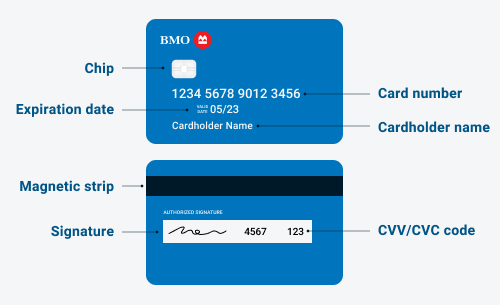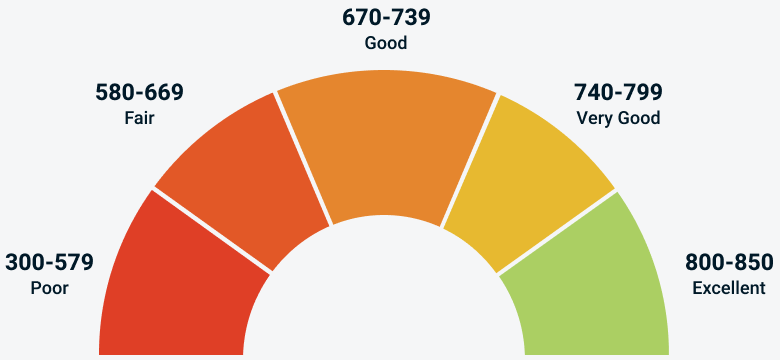Credit cards explained in 15 minutes
If you’re considering applying for a credit card, it’s important to understand how credit cards work. Here’s what you need to know about how to apply, make payments, and use your credit card.

You’ve probably seen a credit card, and maybe even have one in your wallet right now. That’s because credit cards have become a huge part of everyday spending for many Canadians. In fact, there are more than 76.2 million Visa and MasterCard cards currently in circulation according to the Canadian Bankers Association.
But what is a credit card, exactly? And how does it work? It’s important to know, since these little pieces of plastic can have a big impact on your credit score, spending habits, and more.
We’ll break down everything you need to know about credit cards, including building your credit history, using your card for purchases, and making repayments. Plus, we’ll cover what you need to know before you apply for a credit card to make the process go as smoothly as possible.
What is a credit card?
Let’s start with the basics. A physical credit card is a thin, rectangular piece of plastic or metal with an embedded chip that’s issued directly by a financial institution (such as a bank or credit union).

The card contains a few key pieces of information:
- A unique credit card number
- The credit cardholder’s full name
- An expiration date
- A three-digit Card Verification Value (CVV)
Credit cards can be used to purchase goods or services (either online or in person) using money borrowed from the card issuer, rather than the cardholder’s own money. That could be anything from daily purchases like gas and groceries to big-ticket items like a new couch or plane tickets for your next big vacation.
Basically, a credit card lets you borrow funds to pay for things — kind of like a short-term loan.
And just like with any loan, you’ll need to repay the money borrowed along with any accrued interest (if applicable) and other charges (like an annual fee). You can make your repayments in full or over time, but make sure you’re paying at least the minimum amount due each month.
Now that you know the basics, read on to learn more on the details of how credit cards work.
How do credit cards work?
Tapping your credit card is simple, but what’s going on behind the scenes?
Each time you use your credit card at your favourite coffee shop or to order something online, you’re borrowing funds from your credit card issuer. Your issuer is the bank (like BMO) or other financial services institutions that have issued your card to you.
That issuer will make a set amount of funds available to you (aka your credit limit) and send payments to merchants on your behalf for the purchases you make with your card.
In addition to making purchases, you may also be able to access cash advances from a bank teller or Automated teller machine. A cash advance allows you to withdraw cash from the available funds on your credit card, which can be helpful if you're short on funds and need cash quickly. It’s important to note that cash advances are subject to fees and higher interest rates.
Making credit card purchases
Swipe, insert, or tap. Using your credit card is as simple as that!
Once you have your credit card, it’s easy to start making payments and purchases. Here are a few common ways you can use your card:
In store
- Tapping or inserting your card at a merchant's point-of-sale (like using your card at the grocery store checkout)
- Adding the card to your digital wallet (such as Apple Pay or Google Pay)
Online
- Using your credit card number (like typing it in to make online purchases)
When using your card, keep in mind that there’s a maximum you’re able to spend – that’s called your credit limit. A credit limit is the highest amount you’re able to put on your credit card before you make any repayments. Your limit is determined by a few different factors, including your credit score, current debt and income, length of credit history, and more.

Paying off your credit card
Now it’s time for the next part of being a credit card user — making repayments.
First, you’ll receive a credit card statement from your card issuer for each billing cycle (typically once a month). You may receive a physical copy in the mail, a digital version in your online banking portal, or both.
The statement is an overview of how much you currently owe, plus all your credit card activity (such as purchases, interest, and fees) for that billing cycle. It typically includes:
- Your name
- Account number
- Statement date
- Payment due date
- Credit limit
- Available credit
- Balance
- Minimum payment due
- Any interest charges
The statement will also contain a list of all the transactions you made during that billing period. Make sure to review your statement carefully and immediately report any errors or potential fraud to your credit card issuer.
Once you receive your billing statement, you’ll have a short window of time until your payments are due — this is called your grace period. The minimum grace period in Canada is 21 days, but some credit cards have grace periods longer than this.
Here’s a credit card tip for you — if you pay off your entire credit card balance within a given billing period, you won’t be charged any interest on the purchases you made during that time frame.
If you don’t pay off your full balance on your statement during the grace period, you’ll start being charged interest on the unpaid portion of the balance. Typically, you’ll be charged from the time you made the purchase (not when you received your statement) and it’ll continue to accrue interest until you pay off the balance in full.
Let’s try an example. Say you find a cool vintage rug, use your credit card to make the $200 payment, and bring the rug home (it looks great in your living room). A few weeks later, you get your credit card statement that says you owe $200 for the rug and it's due Dec. 20.
If you pay the full amount back before Dec. 20, you don’t have to pay any interest. If you don’t pay in full before Dec. 20, you’ll start accumulating interest starting from the day you bought the rug. This will continue until you pay off the rug in full.
It’s important to note that a grace period applies to regular purchases, and not cash advances (including cash-like transactions like wire transfers or gaming transactions). With cash advances, interest is charged from the time you take out the cash advance until the time you repay it in full.
Credit card fees
Having a credit card generally comes with various fees, such as annual fees and interest rate charges that you’ll want to be clear on before you apply. Understanding the basics behind fees can help you maximize the benefits of a credit card without racking up extra charges.
- Annual fees: An annual fee is a fixed charge that’s tied to certain cards, often premium cards that offer more benefits than those with no annual fee. This amount is unrelated to your balance and spending and will need to be paid each year on a set date. Most annual fees are paid in a lump sum, once per year.
- Interest charges: Interest charges are the cost of borrowing money. You’ll have to pay interest when you carry a credit card balance from month to month. You’ll see these on your statement each billing cycle.
One thing to keep in mind — if you pay off your balance in full on or before your due date, you won’t be charged any interest on your purchases. If you still have a credit card balance after your billing due date, you’ll be charged interest on the remaining amount until you pay it all off.
If you’re unable to pay off an entire purchase on your credit card before your due date, you may be eligible for an installment plan. Plans like the BMO PaySmart™ Installment Plan let you pay for a purchase you make in smaller installments over a fixed period - typically over 3, 6 or 12 months. This generally comes with a total fee upfront or a monthly one that’s added to your overall installment amount, so you’ll know how much you’ll need to pay per month. If your credit card offers this option, it’s a great way to manage and provide more flexibility to your budget.
What are the different types of credit cards and their attributes?
There are probably two names that come to mind when you think of credit cards — Visa and Mastercard. These companies, also called payment networks, act as middlemen that process payments and move money between banks and the merchant during a credit card transaction.
While you’ll often see Visa or Mastercard logos on your physical credit card, your card will typically be issued directly from your bank, credit union, or other lending institutions.
Regardless of whether your card is associated with the two, there are a ton of different card types when it comes to rewards and perks. Here are a few of common credit card types, from no-fee cards to exclusive premium options:
- Rewards credit cards: Earn points on your everyday purchases to redeem for merchandise, travel, and beyond.
- No-fee credit cards: Get the benefits of a credit card with no annual fee. These usually offer less benefits than premium cards with an annual fee.
- Cash back credit cards: Earn cash back every time you use your card and use it toward statement credits, online investing, and more.
- Travel credit cards: See the world with travel credit cards that offer miles and points you can redeem toward your dream vacation, as well as travel-related benefits like airport lounge access and travel insurance.
- Student credit cards: Start building a credit history while earning cash back or miles – all without an annual fee.
- Prepaid cards: Secure, reloadable cards that let you load your own funds and use anywhere your card is accepted.
- Business credit cards: Make the most of your business-related expenses with these cards designed for business owners.
- Affinity credit cards: These cards take a percentage out of each purchase you make and donates it to a cause that’s important to you, whether that’s in community, animal welfare or education.
What are the benefits of having a credit card?
You already know that credit cards are an easy way to make everyday payments, both in person and online. But credit cards often come with a whole host of benefits, rewards, and perks for cardholders. Here are just a few:
- Earn valuable rewards on things you buy every day. Rack up miles, cashback, and points that can be redeemed for merchandise, travel, and more.
- Enjoy exclusive benefits, like concierge services, airport lounge access, special events, discounts, and more.
- Get peace of mind with secure payments, including zero liability in the case of fraud or theft.
- Access to extended warranties and insurance coverage, such as travel, car rental, and medical protection.
- Keep track of your finances with detailed monthly statements of your purchases.
A credit card can also be a reliable safety net if you need access to funds or cash in an emergency.
How can credit cards help build my credit score?
A credit score may be just a number — but it’s an important one. Your credit score is a number between 300 and 900 that represents how likely you are to repay money loaned to you, based on your financial history. The higher the number, the better your creditworthiness.
You can get your credit score calculated by Equifax or TransUnion, the major credit bureaus in Canada. This score can differ between the two bureaus, so you’ll want to keep this in mind when applying for a loan as your lender may choose to go with one over the other to determine creditworthiness.

A credit card can be a helpful tool in building a solid credit history. Lenders review this whenever you apply for different types of loans and maintaining a positive credit history can pay off in the long run. You’ll be more likely to qualify for preferred interest rates for big purchases like a car or a mortgage.
Here are a few ways you can use your credit card to start building up a stellar credit score:
- Make payments regularly and on time. Your credit history is all about showing how you can reliably repay borrowed money, so being consistent with your payments can go a long way in improving your score over time. Automatic payments are a great way to make sure your card is always paid on time.
- Don’t open too many cards at once. For lenders, applying for too many credit products in a short time can be a red flag and might ding your credit score.
- Keep your credit card balances low. Best case scenario, you’d pay your credit cards off in full each month. If that’s not an option, pay off the most you can during each billing period and avoid getting too close to your credit limit. A good rule of thumb is to keep your credit card balance under 30% of your credit limit.
- Don’t cancel all your credit cards at once. Lenders look at your credit history to determine your creditworthiness, and wiping out all your credit products can be detrimental to your score in the long run. The age of your credit history plays a role in determining your score. If, for example, you cancel a credit card that you’ve had for a long time, this gets removed from the average age of your credit history and reduces its length of time on your record, which can then reduce your score.
- Think long term. The longer you keep your accounts in good standing, the better for your credit score. Find a card that you want to stick with and focus on keeping it paid down consistently over the years.
How do I choose a credit card?
Now that you know all about the different types of credit card options, how do you pick one that’s right for you? Here are a few things to think about when choosing a credit card:
- Look for cards tailored to your life. For instance, there are cards designed for newcomers to Canada, students, and business owners. There are also cards for those with low or high incomes.
- Reflect on your current spending habits. What do you plan to use your card for the most? You can find cards that offer higher earn rates for specific purchases such as groceries, gas, dining, transit, and travel-related expenses.
- Find what’s rewarding for you. Are you looking to rack up some points? Or get some extra cash back on every purchase? There are many types of credit cards perks out there, so look for one that feels the most rewarding to you and your lifestyle.
- Check the annual fees and interest rates. Before you apply for a credit card, you’ll want to decide if you’re comfortable with the annual fee and interest rate. Keep in mind that there are no fee and low fee/low interest rate cards available, but cards with an annual fee often give you lots of extra benefits that can offset the cost of the fee itself.
When comparing different cards, here are a few things to consider when seeing how they stack up against each other:
- Interest rate/Annual percentage rate for purchases and cash advances
- Special welcome offers like bonus points or miles
- Annual fee that you’ll pay each year to be a cardholder
- Earn rates (how quickly you’ll rack up points, miles, and rewards)
- Extra perks like airport lounge access or travel insurance
Looking for the right BMO credit card for you? Learn more about how to choose a credit card and use our tool to compare credit cards.
How to apply for a credit card
Thinking of getting a credit card? Applying for a credit card is generally quick and easy, and can often be done online, over the phone or in person at a local branch.
Here are some things you’ll need to consider when completing your application:
What information do I need to provide?
- Your legal name
- Your employment history and current employment status
- Current address and previous address if you’ve lived in your current address for less than two years
- Social insurance number (optional)
- Date of birth
- Income
- Rent or mortgage amount
When you apply, your card issuer will do a credit check, which means they’ll check your financial history with a credit reporting agency (like Equifax or TransUnion). They’ll look at your credit score, along with other factors like your income and whether you’ve paid back previous loans on time. These factors will determine whether you’re approved, what your credit limit will be, and they may also impact your interest rate.
How do I qualify for a BMO credit card?
- You must be the age of majority in your province of primary residence
- You must be a Canadian citizen or permanent resident
- You must meet the minimum income requirements (if applicable for certain premium cards)
- You must not have filed for bankruptcy in the past seven years
Ready to get started? Check out these great BMO credit card options and start making the most out of your everyday purchases.
Find the right card for you
Explore low interest credit cards and find one that fits your financial goals.
Helpful tools
Compare cards
Help me choose
Related articles

Understanding credit card interest

